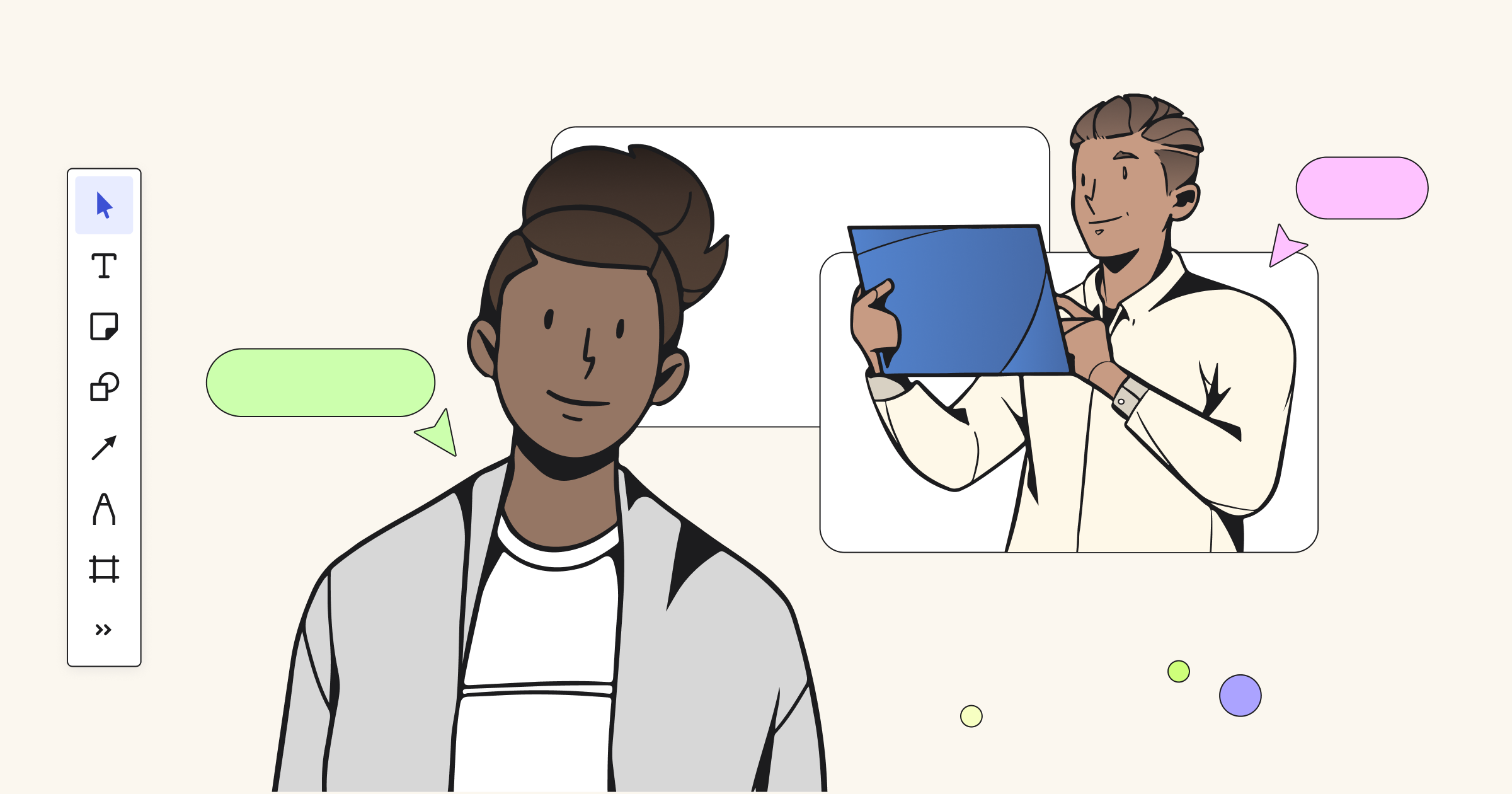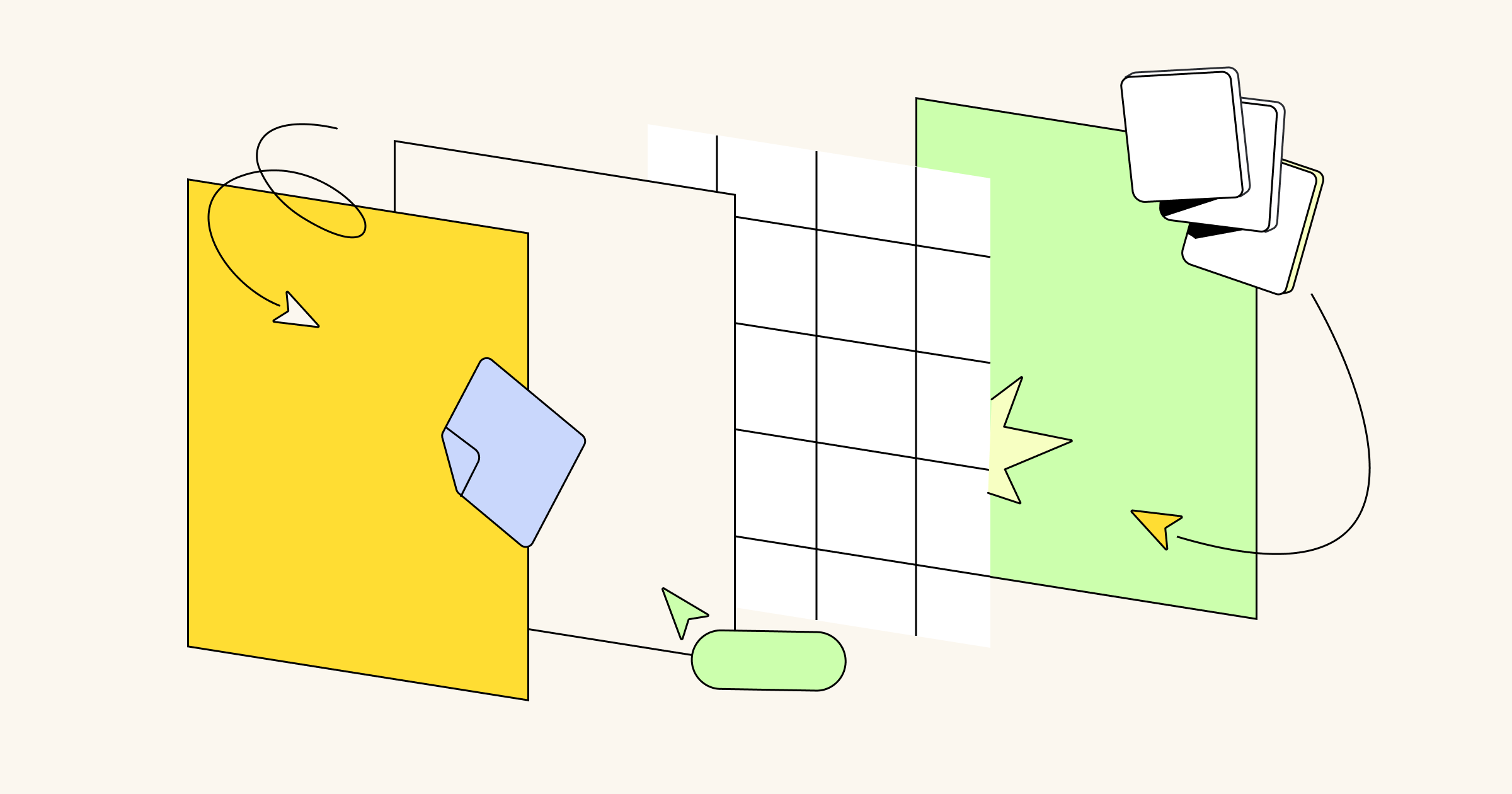To meet the challenges of the future, businesses have to stay agile. Since the pandemic, we’ve seen teams with agile practices outperform non-agile teams on almost every dimension that matters. Agile organizations saw greater customer satisfaction, employee engagement, and operational performance than their competitors.
As companies adopt remote, in-person, and hybrid working models, adopting agile practices is only going to get more important. To support agile workflows, leaders must make sure their teams have the tools, systems, and platforms to succeed.
What does it take for an agile team to succeed in a hybrid world? In this article, we’ll explore the answer and find out how visual collaboration tools are essential for helping teams embrace change, iterate improve, and apply methodologies.
The power of agile in a hybrid world
Companies are under immense pressure to perform—but just as importantly, to adjust how they perform. As customer preferences change and competitors release new products and services, companies have to know how to pivot fast. Only the nimblest organizations are getting ahead.
Nimble organizations embrace agile, hybrid work rather than rigidly sticking to traditional work models. Hybrid work can be synchronous or asynchronous. It can take place anywhere, at any time: at the office, at home, or on the go. In practice, that might look like:
- Optional meetings with clear agendas that are recorded and distributed so the team can digest them afterward
- Spontaneous brainstorms with rigorous documentation
- Slack channels that can be muted or entered at will
- Tasks that are completed autonomously by individuals, rather than team members waiting for a hand-off or a go-ahead
Many hybrid orgs have adopted a blend of synchronous and asynchronous work. That’s because a blended model removes unnecessary barriers to productivity. Forcing employees to stick to a rigid schedule erodes trust and slows down processes.
Nurturing an agile mindset
Hybrid work goes hand-in-hand with the agile mindset. On the one hand, a hybrid model enables teams to take control of their time and creativity, while on the other hand, the agile mindset emphasizes flexibility, transparency, innovation, and collaboration. Under the right conditions, the two can act like a feedback loop. Practices like sprints support speed and creativity, which is even easier when teams can work anytime and anywhere, offline or on.
While the right mindset is important, however, it must be paired with the right tools and processes. Here’s how organizations and teams can help nurture an agile mindset in a hybrid workplace.
Turn insight into action. The agile mindset is all about iteration. After a project, teams run a retrospective to understand how they performed and what they can do better next time. Without the proper tools to turn insight into action, however, hybrid teams might find it difficult to collect information on what went wrong. Instead, they might find the process to be demoralizing and counterproductive.
Put workflows in place to translate post-retrospective learnings into new processes and systems. Teams should leave their retrospectives feeling empowered to take on the next project and confident enough to iterate.
Embrace documentation. Some teams mistakenly believe that documentation slows down processes. That couldn’t be further from the truth. Documentation speeds things up by giving teams a pool of knowledge to draw from. Instead of having to look for the information they need to work on a project, teams can hit the ground running.
Kanban boards and product backlogs are popular ways of fostering transparency and communication. A Kanban board consists of a timeline with tasks in the form of cards. Each card allows teams to see the status of a task, track their progress on a project, and address potential bottlenecks or impediments. Similarly, a product backlog allows product owners and teams to store ideas, plan epics, and prioritize tasks.
Scale the team’s most commonly used processes. The beauty of async and hybrid models is that they help leaders meet the team where they’re at. As teams develop preferred processes for getting work done, it’s crucial to provide the tools and platforms they need to scale.
Customizable templates are an ideal tool for scaling processes. Teams can easily try out agile-friendly processes like PI planning, user story mapping, and retrospectives to decide what works for them. Popular templates for agile teams include:
- Kanban Framework: Use a Kanban board to monitor the progress on a project from start to finish.
- Design Sprint Kit: This template gives you everything you need to run a five-day design sprint, in which a team designs, prototypes, and tests ideas without building a finished product.
- Impact Mapping: Impact mapping is a strategic planning technique that allows organizations to stay on track while building products and shipping goods and services. Create an impact map to better understand the relationship between your product roadmaps and your organization’s high-level goals.
- SAFe Program Board: Use this board to kick off a Program Increment (PI) planning session, in which your team takes one or two days to present the business context and vision.
Teams can use templates to adapt these processes to their own projects and needs. Depending on whether they’re working on a project synchronously or asynchronously, the team can add features that allow team members to stay in the loop wherever and whenever they’re working.
Building interactive meetings and workshops
Unlike traditional meetings, agile meetings are meant to be laser-focused and efficient. Every meeting is built around a clear objective that must be addressed at some point during the conversation. That objective could be anything from brainstorming to evaluating your previous sprint to planning out the next quarter.
Just because the meeting moves quickly, however, does not mean it shouldn’t be interactive. Interactive meetings, particularly when working hybrid and async, help teams foster creativity and communication. Without interactive elements, meetings and workshops can become stale, unstructured, and inefficient. Here are some tips for building interactive meetings and workshops.
Encourage facilitators to prepare ahead of time. Pre-work is important for synchronous and async meetings alike. There are two steps facilitators can take to make your meetings and brainstorms more interactive even before they’ve started.
First, create and send an agenda. Participants are more likely to engage if they’re aware of the meeting objectives ahead of time. Agendas provide a framework for keeping the conversation on track, and they make participants feel like their time is being used wisely.
Then, think about any exercises you’re going to use during the meeting. Are you going to run a brainstorm? Will you ask participants to vote on anything? Will you be adding visuals? Before running a meeting with Miro, use the Template Library or visit the Miroverse, the community gallery, to browse templates and get inspired.
Quick tip:
Use these popular templates to set up an interactive meeting for your Agile team.
Use visuals. Visuals are useful for illustrating ideas and keeping participants engaged. In Miro, use Visual Notes to create meeting notes, jot down project summaries, annotate the board, and much more. Agile methodologies heavily rely on sticky notes for brainstorming and exercises. Virtual sticky notes behave the same way, except that you don’t have to peel them off the wall when you’re done.
Quick tip:
When you run a meeting with Miro, the facilitator toolkit makes it easy to keep everyone engaged and on task:
- Attention management: Focus participants while you drive a hybrid or remote session. Switch between presenting and collaborating: step onto the stage, and then step off when you’re ready to work as a team.
- Hidden frames: Eliminate distractions and reveal content at the right moment to keep everyone on the same page.
- Protected lock: Prevent participants from accidentally deleting any content. Lock any item on the board.
- Encourage collaboration. Collaboration is the key that unlocks innovation. Your team brings a diverse set of approaches and ideas to the workplace. That means you need a diverse set of tools to receive them.
To democratize participation, make sure you’re giving people non-verbal opportunities to contribute. Provide a variety of formats for communication: video, audio, visual, and text. Giving your quieter teammates the opportunity to add content to the board is a great way to make sure everyone is included.
Quick tip:
Agile organizations simplify their workflows. Miro integrates with all the tools you use to get work done, making it even easier to collaborate.
- Google Calendar: Attach and share Miro boards prior to meetings and workshops.
- Jira Cards: Visualize, edit, and create Jira tasks directly in Miro.
- Airtable: Capture freeform ideas from Miro into your Airtable workflows.
- Zoom: Collaborate with your team on Miro while in a Zoom meeting.
- Slack: Share Miro access, comment, and check for updates in the app.
Turn ideas into action. For hybrid meetings, post-work is just as important as pre-work. End every meeting by sending out a recap. The recap should make note of any decisions made by participants, the most important points that were covered, and any future decisions that need to be made. It’s crucial that you send the recap to all participants, even those who were not physically present in the meeting, so everyone has the context they need to keep working.
Quick tip:
In the recap, give participants the opportunity to share feedback on how the meeting went. For example, a ROTI (return of time invested) framework invites participants to rate whether the time they invested in the meeting was worth it to them.
Moving forward
When remote and hybrid work was still new, some teams feared that these new modes might create a less transparent and collaborative way of doing work. On the contrary: non-traditional work has demonstrative benefits for organizations and their creativity.
And now, synchronous and asynchronous work is essential for the hybrid world we live in. Companies are under pressure to stay agile, innovate quickly, fail fast, and succeed often.
Miro is essential to agile. It’s the only platform tailor-made for the lightning-fast collaborative work that agile demands. Our vision is to bring Agile into the hybrid world by giving teams the tools they need to think fast and work smart.






